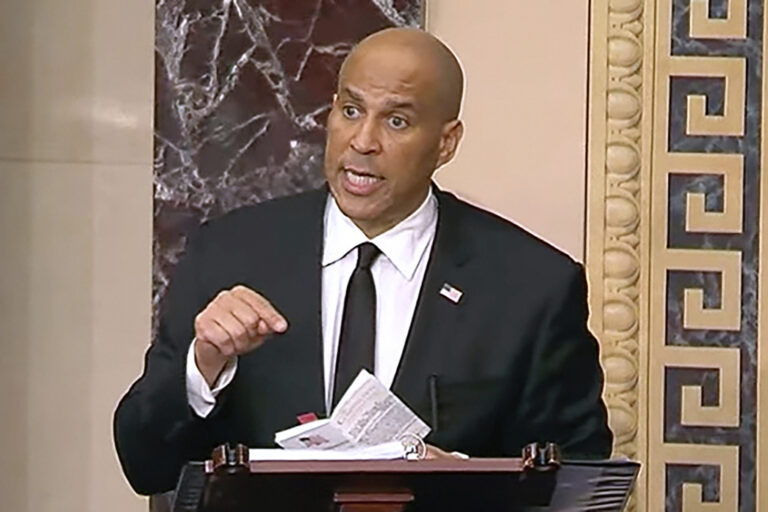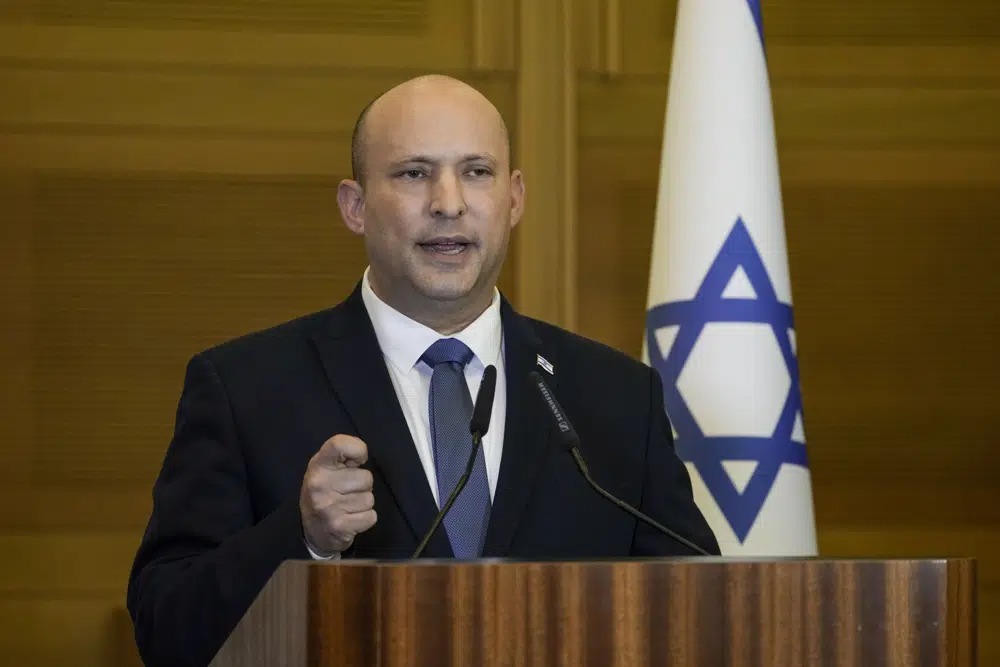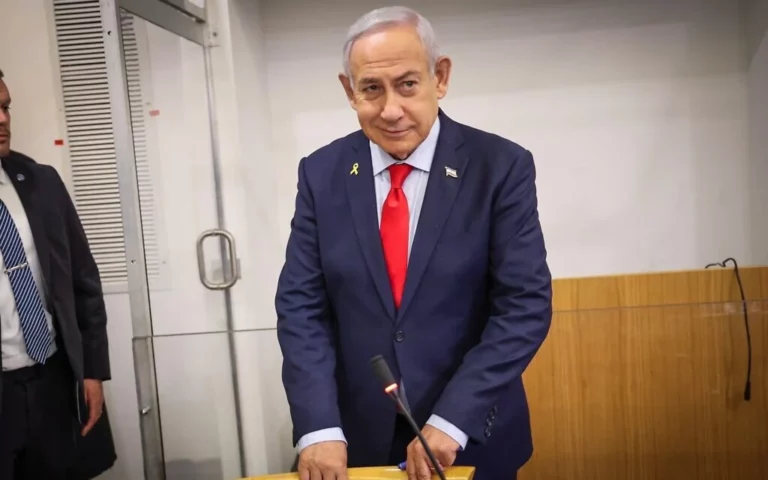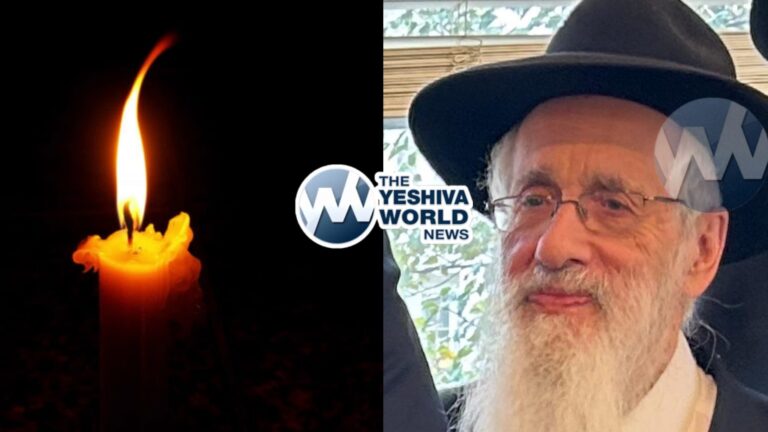 Written By Rabbi Moishe Lebovits
Written By Rabbi Moishe Lebovits
KOF-K Kosher Supervision
Much has been discussed over the years regarding Thanksgiving dinner. We will discuss whether such a party is allowed, and if turkey may be served. The underlying point of the debate is whether Thanksgiving is considered a religious or secular holiday. In order to determine this, we need to know the history of the Thanksgiving holiday (see footnote).[1] In addition, we will discuss the kashrus of birds in general and turkey specifically.
Halachic Considerations
In order to determine if eating turkey at a Thanksgiving dinner is permitted, we need some background into the halachos of following in the ways of the non-Jews.
The Torah[2] forbids following the ways of the non-Jews. The Rambam[3] writes that one should be different than the non-Jews in his actions, knowledge and in his understanding. The Chinuch[4] says the reason for this mitzvah is to distance the Jews from the non-Jews. There is a major dispute among the Rishonim and Achronim as to the parameters of this issur.[5] A practice which the non-Jews do for their avodah zarah is forbidden for a Jew, even if the Torah says it is a Jewish custom.[6] The Maharik[7] writes that non-Jewish practices whose reasons and origins cannot be found are still forbidden to Jews, since it can possibly stem from avodah zarah. Furthermore, all immodest practices of the non-Jews are forbidden to a Jew. Most poskim agree with the guidelines of the Maharik.[8] However, the G’ra[9] says that we may only imitate a practice which possibly originated in Jewish circles, and was then adopted by the non-Jews.
According to the lenient approach (which the halacha follows), foolish but secular customs are permissible so long as they have a reasonable explanation and are not immodest.
The Opinion of Harav Moshe Feinstein zt”l
In one teshuva, Harav Moshe Feinstein zt”l[10] maintains the following: “Concerning the question of celebrating any event on a holiday of non-Jews, if the holiday is based on religious beliefs by the non-Jews, such celebrations are prohibited if deliberately scheduled on that day; even without intent, it is prohibited because of maris ayin. . . The first day of year for them [January 1] and Thanksgiving are not prohibited according to law, but pious people should be stringent.” Therefore, one should preferably not schedule a chasuna or a Bar Mitzvah on the night of Thanksgiving, since it may be maris ayin. However, a seuda for a Pidyon Haben or a Bris Milah is permitted, since it is obvious that the seuda is a seudas mitzvah. Nevertheless, one may schedule a chasuna on Thanksgiving because many people are off from work that day.[11]
In another teshuva[12] he writes (paraphrased), “In regards to joining a Thanksgiving party, since this is not brought down in the non-Jewish writings as a holiday, and it is just a remembrance of those who lived here, there is no issur to make a meal and eat turkey at the meal. However, it is forbidden to make this a required act, but it should be voluntary, which means not all the time – each year.[13] In addition, there is also a problem of adding mitzvos . . . even though one can question the source, it is still a real prohibition.”[14]
Harav Moshe Feinstein zt”l[15] says the following in regard to the non-Jews doing something they enjoy (this was said in regard to going without a head covering). “Therefore, it is obvious, that even in a case where something would be considered a prohibited non-Jewish custom, if many people do it for reasons unrelated to their religion or law, but rather because it is pleasurable to them, there is no prohibition of imitating non-Jewish customs. So too, it is obvious that if non-Jews were to make a religious law to eat a particular item that is good to eat, halacha would not prohibit eating that item. Any item of pleasure in the world cannot be ossur because non-Jews do it out of religious observance.”
According to this, if a non-Jew eats turkey because he enjoys it then there is no need for a Jew to refrain from eating it either.
In yet another teshuva Harav Moshe Feinstein zt”l[16] seems to take issue with celebrating Thanksgiving. He says the following: “The reason why it is forbidden to make a party on this day is because one is going in the ways of the non-Jews, even if this is not a religious holiday. The non-Jews do it for no reason. Nonetheless, eating turkey is permitted.[17]
Clearly, Harav Moshe Feinstein zt”l does not agree to Thanksgiving celebrations, but places no restrictions on eating turkey on this day.[18]
Opinion of Harav Yisroel Belsky Shlita
Harav Yisroel Belsky Shlita adds the following: “If such parties were made as a sign of patriotism to the United States, it would be acceptable for Jews to make them as well as a sign of loyalty to their host country. This does not seem to be the case however, and there is no reason that a Jew should make them.”
Approaches of Other Gedolim
Harav (J.B.) Soloveitchik zt”l permitted turkey on Thanksgiving.[19] The following are the words written by Harav Herschel Schachter Shlita in his sefer on the rulings of Harav (J.B.) Soloveitchik zt”l: “It was the opinion of Harav Soloveitchik that it was permissible to eat turkey at the end of November, on the day of Thanksgiving. We understood that, in his opinion, there was no problem that turkey did not lack a tradition of kashrus (see later on in this article) and that eating it on Thanksgiving was not a problem of imitating gentile customs. We also heard that this was the opinion of his father, Harav Moshe Soloveitchik zt”l.”
The opinion of Harav Dovid Cohen Shlita[20] is that to eat turkey for the sake of a holiday is prohibited by the rule of Tosfas in Meseches Avodah Zarah[21] since it is improper to follow an irrational rule of the non-Jews. Nonetheless, there is no prohibition for a family to get together on a day when people do not go to work and to eat together. They may eat turkey because they enjoy it, but not for the sake of thanks. Nevertheless, the spirit of the Chachomim does not approve of such conduct, since it appears as if they are following the ways of the non-Jews.
Conclusion
There are some who felt that Thanksgiving dinner should be avoided. However, the custom of many people in Klal Yisroel is to eat turkey on Thanksgiving (see below regarding the kashrus of turkey). As mentioned above, one should not have a party.
Davening Later on Thanksgiving
Some poskim maintain that one should not change the regular time for davening to a later time even though it is a not a work day. However, making a later minyan is permitted if it is not at that time on a regular (non-holiday) day.[22] Others maintain that since we all know that the reason for davening later is because everyone is home from work and they may wish to sleep later they do not focus on the cause of why they are off from work.[23] Harav Yisroel Belsky Shlita says if one normally davens late when he has no work (i.e. Sunday) then he may do so on a legal holiday such as Thanksgiving as well.
Attending a Thanksgiving Parade
The question of observing or attending a Thanksgiving Day parade is an interesting one. It depends on the following definition: If Thanksgiving is a non-Jewish holiday, it would be prohibited to participate or benefit in any way from the parade honoring the day. If one concludes that Thanksgiving is a secular holiday, there would seem to be no problem in attending a parade, as a Thanksgiving Day parade is no different from an Independence Day parade. Although it may be permitted to go to a Thanksgiving parade it is not with the spirit of a Jew to attend such parades.[24] One who has young children who insist on going to the parade do not have to refuse.[25]
Kashrus of Turkey
As mentioned above, many people have the custom to eat turkey on Thanksgiving. However, the kashrus of turkey is a complicated issue.
Kosher Signs – Birds
There is a discussion in the poskim if there is a mitzvah d’raisa or d’rabannan to check birds for signs in order to maintain if the bird if kosher or not.[26]
The Torah[27] identifies twenty-four classes[28] of birds which are not kosher. If a bird is not one of the twenty-four it is kosher.[29] However, we cannot clearly identify these non-kosher birds. Therefore, in order for a bird to be kosher it has to have certain simonim.[30] The Torah does not give any identifying signs.[31] However, the Chachamim provided us with a way to tell if a bird is kosher or not.[32] Any bird which is a dores, a predator, is not kosher.[33] Kosher birds have the following signs: an extra finger,[34] a crop,[35] and the inner layer of the bird’s gizzard can be peeled off by hand.[36] It should be stated that not all kosher birds have all four signs. There is a discussion in the poskim if a kosher bird needs all four signs or if one or a couple or a few are enough.[37] If one knows that a specific bird is a dores then even if it has any of the kosher simonim the bird is not kosher.[38]
Mesora
A number of poskim maintain that a bird with the correct simonim is kosher even if there is no mesorah and no proof that it is not dores.[39] The Gemora[40] mentions a story that certain people in a town ate a non-kosher bird because they though the bird was kosher. Therefore, we only eat a bird with a mesorah that it is kosher and was eaten by Jews throughout the ages in that place.[41] The Rama[42] says this is the custom and it may not be changed.[43] If a bird has a mesora then there is no need to check if it has any of the simonim which indicate its kashrus status.[44] However, if one finds that it is a dores then he should not accept the mesora.[45] The Aruch Hashulchan[46] uses the word “chalilah” to permit a bird without a mesora.
Who is Qualified to Testify on a Kosher Bird
One may only accept testimony that a specific bird is kosher from one who is both a chacham and a baki.[47] Some say that there is no one around today who would qualify for this.[48]
Mesora in a Town
Once a mesora is established in a certain town one can be very lenient regarding this as follows: The Shulchan Aruch[49] says one who comes from a town where there is no mesora on a bird and goes to a place where there is a mesora can eat there even if he plans on coming back.[50] In addition, if his hometown has a mesora on a bird and he goes to a town where there is no mesora on the specific bird he may eat the bird in the latter town.[51] However, this is only if he plans on returning to the first town.[52]
There are those who maintain that one who is in a town where there is no mesora on a bird should not eat the bird even if there is a mesora on the bird in another town.[53] The custom is to be lenient.[54]
Relying on Names
Many poskim are of the opinion that one cannot rely on a name of a bird for a mesorah. The reason for this is because a species which was called by a specific name hundreds of years ago may not be the same today.[55] There is a discussion if the mesora can be transmitted with diagrams or verbally.[56]
Goose – Duck
There are those who maintain that if a bird has a wide beak and feet[57] (goose, swans or duck)[58] it is known that it is not a dores and permitted if it has the other three simonim as well.[59] However, the Rama[60] says that we should not rely on this if it does not have a mesora.[61]
Hybridization
The Gemora[62] says that a kosher and non-kosher animal cannot interbreed and produce viable offspring. There are those who maintain that this may apply to birds.[63] Based on this, some opine that a bird which breeds with kosher birds and looks like a kosher bird may be eaten even if there is no mesora on it.[64] Others are not convinced that this is a valid argument.[65]
Egg Signs
The opinion of the Avnei Nezer[66] is that if an egg of a specific bird is identical to another bird it is a sign that they are from the same species. Based on this, if the egg of an unknown bird is identical to a known kosher bird, the unknown bird may be eaten without a mesora. Nonetheless, this leniency was not accepted by other poskim.[67]
Other Birds (Pheasant, Muscovy Duck etc.)
Many poskim dealt with the permissibility of eating other birds and questioned their mesora status. This discussion is beyond the scope of this article, but references may be found in the footnotes.[68]
Chicken
Chickens were eaten as early as the seventh century BCE.[69] The chicken is a kosher bird.[70] There have been many poskim who discussed the different kinds of chickens.[71] Most referred to a chicken as a “kibitzer hen.”[72]
Mesora on Turkey[73]
The mesora on turkey has some unique twists.
Turkey is indigenous to America, and was brought to Europe as a product of trade with the new land. It was at first thought to be the larger American version of the European chicken. Since Columbus thought he had landed in India, the bird was called tarnagolet hodu in Hebrew and hendika hen in Yiddish, both of which mean Indian chicken.
How can we consume turkey if it apparently does not have a mesora? We know that Jews today eat turkey but why? In addition, turkey eggs are larger and different than other kosher birds and it is difficult to crossbreed them with other chickens.[74] Therefore, the above heterim do not apply, and its permissibility remains in doubt. Nonetheless, the poskim offer various reasons to permit turkey. We will list them below:
Some argue that the Rama only requires a mesora on a bird which was not eaten by Jews in the past. However, a bird which was eaten for many years and has all three simonim of a kosher bird is permitted even according to the Rama. There is no reason to say that all the people who ate turkey did so in error.[75] Others say that we do not hold like the Rama’s opinion, and if a bird has the simonim which indicate a kosher status we may eat it.[76]
The Meishiv Davar[77] says that when the turkey (indik) was brought from India there were questions regarding its kosher status, and therefore people refrain from eating it. However, since the majority of people accepted it as kosher, unless there is evidence that it is not kosher we are not going to say that it is prohibited (especially not to tell people who where eating it for many years that they were doing so in error).
The Arugas Habosem[78] says that the mesora is only required to prove that it is not a dores – a predator. If the bird is monitored for at least twelve months one may rely on the kosher status of the bird even without having a mesora on it, as it obviously is not a predator.
The Mei Be’er[79] maintains that we can rely on the Jews of India, the place of origin of the turkey, who had a clear mesora dating back to Moshe Rabbeinu that the turkey was kosher. The only concern that ever existed was if one can rely on the Indian mesora, and he maintains that it is indeed reliable.
Both the Kaf Hachaim[80] and the Zivchei Tzedek[81] say that it originated from India and is permitted.
The Tzemach Tzedek[82] says the fact that a specific bird is eaten is a form of mesora.
The Devar Halacha[83] says that the Rama required a mesora only for a new category of birds, but turkey is the same category as a chicken even if there are some differences.
Some say that from the fact that turkey entered the Jewish menu without an apparent mesora indicates that the Gedolim in those days did not hold like the Rama and it was enough that the bird had the simonim which indicates its kosher status.[84] There are those who say that turkey was accepted before the Rama was born (1540). Therefore, there is no need for a mesora since that rule was not yet imposed at that time.[85] However, this is a chiddush since there are poskim who maintain the need for a mesora even before the Rama’s times.
In his discussions about Thanksgiving, Harav Moshe Feinstein zt”l indicated that there is no issue with eating turkey.[86]
Although turkey does not have a mesora, many poskim maintain that it is permitted.[87]
There were those who refrained from eating turkey because of the uncertainties regarding the mesora issue.[88] It is reported that Harav Yaakov Kamenetsky zt”l did not eat turkey.[89]
Most major kashrus agencies both in America and in Eretz Yisroel give hashgachas on turkey.
[1] The first Thanksgiving Day dinner was held by the pilgrims to celebrate their survival of the particularly harsh winter of 1622-23. This celebration took place on July 30, 1623. It seems that the pilgrims called all wild fowl “turkey.” Governor William Bradford sent men out to capture fowl for the women to cook. We don’t know whether it was wild turkey, duck, goose, or even eagles. They called it turkey, and roasted the birds on spits for their celebratory dinner.
While modern day Thanksgiving dinner centers on turkey, there was other flesh available at the first celebration. Seafood was readily available, so there were clams, lobster, and other fish (maybe even seal!) to eat. Similar celebrations occurred in the New England area throughout the 1600’s. However, they were only local (rather than national or even regional) celebrations of Thanksgiving — and only to mark the end of a particularly difficult winter — until 1789. In 1789, Congressman Elias Boudinot of New Jersey proposed in Congress a resolution urging President Washington to: “Recommend to the people of the United States a day of public Thanksgiving and prayer to be observed by acknowledging with grateful hearts the many and signal favors of the Almighty God, especially by affording them an opportunity to establish a Constitution of government for their safety and happiness.”
After a prolonged debate, President Washington issued the first National Thanksgiving Proclamation, setting November 26, 1789 as Thanksgiving and a national holiday. For the next fifty years, the holiday was mostly ignored. It was not until 1846, when the unity of the country was again in controversy because of the Missouri Compromise and the problems of slavery that the celebration of Thanksgiving as a national holiday returned to the national agenda. From 1846 to 1863, Ms. Sara Joseph Hale, the editor of Godey’s Lady Book, embarked on a campaign to turn Thanksgiving into a national holiday during which workers would not be required to go to work. Her campaign culminated in President Lincoln’s Thanksgiving proclamation of 1863 — the first such proclamation of a national Thanksgiving holiday since 1789. Since 1863, Thanksgiving has been celebrated as a national holiday and a day of rest at the end of November, either the fourth or fifth Thursday of the month.
One might ask whether Jewish law should simply defer to the American law determination here that Thanksgiving is a secular and not a religious holiday. The simple answer is that American law adopts a definition of secular that clearly is religious in the eyes of Jewish law. The Supreme Court has ruled that both X-mas and Chanukah are secular holidays and have secular displays that lack a religious theme. Certainly Jewish law views neither of them as secular and would not accept American law’s definition of secular as binding on adherents of halacha.
A very detailed article was written on this subject from Rabbi Michael J Broyde Shlita which was printed in the Journal of Halacha and Contemporary Society Volume 30:pages 42-65 in great depth.
[2] Parshas Kedoshim 2:23, see Rashi, Eben Ezra, Refer to Parshas Achrei Mos 18:3.
[3] Hilchos Avodah Zarah 11:1.
[4] Mitzvah 262. Refer to Shulchan Aruch Hamikutzar 144:2.
[5] Refer to Tosfas Avodah Zarah 12b “v’ey”, Rashi and Ramban Vayikra 19:9, Bach Y.D. 178, Bais Yosef, Pri Hasadeh 1:48, Minhag Yisroel Torah 6:pages 19-28 in depth. See Journal of Halacha and Contemporary Society 3:64-85 (1981).
[6] Refer to Tosfas Avodah Zarah 11a “v’ehi”, Ran Sanhedrin 52b, see Bach Y.D. 178, Shulchan Aruch Hamikutzar 144:5.
[7] Shoresh 88, Bais Yosef ibid.
[8] Refer to Darchei Moshe 1, Rama 178:1, Maharam Shik Y.D. 178. See Igros Moshe Y.D. 4:12.
[9] Y.D. 178:7, Darchei Teshuva Y.D. 178:14.
[10] Igros Moshe E.H. 2:13, see Igros Moshe O.C. 5:20, Y.D. 4:12.
[11] Refer to Igros Moshe E.H. 2:13:page 326, O.C. 5:20:6, Y.D. 4:11:4.
[12] Igros Moshe Y.D. 4:11:4, see Igros Moshe Y.D. 4:12.
[13] Bnei Bonim 3:37.
[14] Refer to Igros Moshe Y.D. 4:12. See Yugel Yaakov page 243.
[15] Igros Moshe Y.D. 4:11:3.
[16] Igros Moshe O.C. 5:30:6.
[17] This is the opinion of Harav Ephraim Greenblatt Shlita quoted in Journal of Halacha and Contemporary Society 30:page 53.
[18] Refer to Igros Moshe Y.D. 4:12.
[19] Nefesh Harav page 231, Bnei Bonim 2:30, 3:37.
[20] I want to thank Rabbi Michael J Broyde Shlita for sending me some letters from Harav Henkin Shlita, Harav Dovid Cohen Shlita, Harav Ephraim Greenblatt Shlita, and Harav Feivel Cohen Shlita on this topic (sent 11-11-09). The opinion of Harav Feivel Cohen Shlita and others is quoted in the Journal of Halacha and Contemporary Society 30:page 59.
[21] 11a “v’eiy”.
[22] Opinion of Harav Dovid Cohen Shlita in a letter dated 9 Nissin 5755 (given to me by Rabbi Michael J Broyde Shlita on 11-11-09).
[23] Opinion of Harav Yisroel Pesach Feinhandler zt”l (personal email 11-12-2009), see Bnei Bonim 3:37.
[24] Opinion of Harav Doniel Neustadt Shlita (personal email 11-17-09).
[25] Harav Yisroel Belsky Shlita.
[26] Refer to Darchei Teshuva 82:1. See Shaleiach Tishalach pages 269-291 in great depth.
[27] Devarim 14:11-18, see Vayikra 11:13-19. Refer to Meseches Chullin 63b.
[28] Refer to Rambam Machalas Asuros 1:14 who lists them. See Darchei Teshuva 82:2.
[29] Rashi Meseches Chullin 61a “of”, Rambam Machalas Asuros 1:14-15, Tur Y.D. 82, Shulchan Aruch Y.D. 82:1, Chochmas Adom 36:2.
[30] Refer to Aruch Hashulchan Y.D. 82: 6-27.
[31] Refer to Meseches Chullin 61a, Tosfas “lo”, Rambam Machalos Asuros 1:14, Tur Y.D. 82, Shulchan Aruch Y.D. 82:1, Chochmas Adom 36:2, Aruch Hashulchan 82:2, Kaf Hachaim 1. See Meseches Chullin 63b, Tosfas “ofos”.
[32] Meseches Chullin 61a, Rosh 3:58.
[33] Meseches Chullin 59a. This is a dispute as to what a dores means. Refer to Rashi Meseches Chullin 59a “hadores”, 62a “v’hani”, Tosfas Meseches Chullin 61 a “hadores”, Rosh Chullin 3:58, Rashba 62a “omro”, Ran 20b “omru”, Rambam Machalas Asuros 1:20, Chinuch Mitzvah 157, Tur 82, Shulchan Aruch Y.D. 82:2, Taz 1-2, Shach 3, Pri Megadim M.Z. 1, Pri Megadim S.D. 82:3, Chochmas Adom 36:2, Rav Akiva Eiger Y.D. 82, Tzemach Tzedek Y.D. 60, Darchei Teshuva 13-16, Aruch Hashulchan 5-6, Kaf Hachaim 6-9.
[34] There is a dispute as to what this means (Refer to Rashi Meseches Chullin 59a “etzbah”, Ramban Meseches Chullin 59a, Bais Yosef Y.D. 82, Taz 3, Shach 5, Pri Megadim M.Z. 3, Pri Megadim S.D. 82:5, Chochmas Adom 36:2, Darchei Teshuva 17, Aruch Hashulchan 82:3, Kaf Hachaim 9.
[35] Refer to Darchei Teshuva 18. See Vayikra 1:16.
[36] Meseches Chullin ibid, Rambam Hilchos Machalas Asuros 1:18-19, Bais Yosef, Shulchan Aruch Y.D. 82:1, Pischei Teshuva 2, Darchei Teshuva 19, Aruch Hashulchan 82:4. Refer to Chochmas Adom 36:3. See Tosfas Meseches Chullin 61 “kol”.
[37] Refer to Rashi Meseches Chullin 61a “nesher”, Rambam Hilchos Machalas Asuros 1:16, Gra 82, Pri Tohar 82:3, Tzemach Tzedek Y.D. 60.
[38] Chochmas Adom 36:2.
[39] Shach 82:8 quoting the Maharshal, Chochmas Adom 36:6, Darchei Teshuva 24.
[40] Chullin 62a.
[41] Meseches Chullin 63b, Rosh 3:59, Rosh (teshuvos) 20:20, Tur 82, Shulchan Aruch Y.D. 82:2, Rama 3, Taz 4, Pri Megadim S.D. 82:7, Chochmas Adom 36:6, Divrei Chaim Y.D. 2:45, Tzemach Tzedek Y.D. 60.
[42] 82:3, Shach 8, Kaf Hachaim 29. Refer to Rashi Meseches Chullin 62a “chazoy”.
[43] This applies to Sefardim as well (Zivchei Tzedek 82:24).
[44] Shach 6, Darchei Teshuva 25, Aruch Hashulchan 10, 31, Kaf Hachaim 10.
[45] Shach Y.D. 82:6 7, Zivchei Tzedek 6, Aruch Hashulchan 31. Refer to Darchei Teshuva 6.
[46] 82:29.
[47] Shulchan Aruch 82:2, Shach 1, Zivchei Tzedek 82:2, Darchei Teshuva 3, 20, 37. Refer to Darchei Teshuva 11, Kaf Hachaim 13.
[48] Pri Megadim S.D. 82:1, Chochmas Adom 36:9. See Maharsham Y.D. 82, Shaleiach Tishalach page 276:footnote 37.
[49] Y.D. 82:4. Refer to Darchei Teshuva 43.
[50] Refer to Taz 5, Shach 10, Chochmas Adom 36:7.
[51] Refer to Taz 6.
[52] Aruch Hashulchan 32, see Pri Megadim M.Z. 6.
[53] Shulchan Aruch 82:5, see Taz 7, Chochmas Adom 36:8.
[54] Shach 11, Darchei Teshuva 44, see Igros Moshe YD. 1:34. Refer to Aruch Hashulchan 34-35, Kaf Hachaim 32. Refer to Daf Hakashrus 13:2-3 regarding Transferring Mesora of Birds.
[55] Refer to Igros Moshe Y.D. 1:74.
[56] Igros Moshe Y.D. 1:74. Refer to Darchei Teshuva 34, Kaf Hachaim 17.
[57] Shach 7, Darchei Teshuva 21.
[58] Refer to Avnei Nezer Y.D. 76,
[59] Rosh Meseches Chullin 3:60, Tur 82, Shulchan Aruch Y.D. 82:3, Shach 4, Zivchei Tzedek 18, Aruch Hashulchan 15.
[60] Y.D. 82:3.
[61] Zivchei Tzedek 82:23, Kaf Hachaim 28. Refer to Pri Megadim S.D. 82:4.
[62] Berochos 7a.
[63] Avnei Nezer Y.D. 1:75. Refer to Chasam Sofer Y.D. 74.
[64] Chessed L’Avraham Tanina Y.D. 22, see Darchei Teshuva 32, Minchas Yitzchok 5:31.
[65] Refer to Maharam Shik Y.D. 98-99, Bais Yitzchok Y.D. 107:10, Darchei Teshuva 32.
[66] Avnei Nezer Y.D. 76:6-12. See ibid:75. Refer to Shulchan Aruch Y.D. 86:2.
[67] Opinion of Harav Yisroel Belsky Shlita quoted in Halacha Berurah 7:4:footnote 25. Refer to Divrei Chaim Y.D. 2:48, Maharam Shik Y.D. 100.
[68] Regarding a Phesant see Medrash Rabbah Bereishis 70:5, Melamed Lehoyel 2:15-16, Kaf Hachaim 82:25, Igros Moshe Y.D. 1:34, Rivevos Ephraim 3:489:2, Mahari Shteiff 202, Mesora 18:pages 87-96 in depth, Shaleiach Tishalach pages 287-289, The Jewish Observer December 2002:pages 28-31. The custom is to be stringent regarding this (opinion of Harav Yisroel Belsky Shlita quoted in OU document B-38). On the Partridge see www.halachicadventures.com. On the Muscovy Duck refer to The Controversial Letters and Casuistic Decisions of the Late Rabi Bernard Illowy pages 162-165, Har Tzvi Y.D. 75, Journal of Halacha and Contemporary Society 46:pages 89-98, Shaleiach Tishalach pages 281-283, OU Document B-46:pages 9. The custom is to be stringent regarding the latter (opinion of Harav Yisroel Belsky Shlita quoted in OU document B-38). For additional birds see Darchei Teshuva 5, Kaf Hachaim 14-26. Mallard Duck – The custom is to be stringent regarding the latter (opinion of Harav Yisroel Belsky Shlita quoted in OU document B-38). Guinea Fowl – The custom is to be stringent regarding the latter (opinion of Harav Yisroel Belsky Shlita quoted in OU document B-38, see Techumin 23:pages 500-508 in depth). Quail (this is what they ate in the Midbar) is permitted (opinion of Harav Yisroel Belsky Shlita quoted in OU document B-38, B-57). Refer to Binyan Av 4:40, Hechsheiros 9:20:footnote 63. In regard to Cornish Hen see Mesora 3:pages 61-65. Other permitted birds are Doves and Pigeons (opinion of the OU as expressed in OU Document B-57). See Zivchei Tzedek 82:19 and Darchei Teshuva 35 regarding doves. In addition see ibid regarding kashering if you cooked a bird which does not have a mesora.
[69] Journal of Halacha and Contemporary Society 35:page 97.
[70] Darchei Teshuva 34.
[71] Refer to Darchei Teshuva 5, 6, 24, 27, 26, 30, 33, 34, and 35, Divrei Chaim Y.D. 2:45-48.
[72] Refer to Maharam Shik Y.D. 98-99, Shol U’Meishiv 3:1:149, Devar Moshe 45, Shaleiach Tishalach pages 278-279.
[73] Refer to Darchei Teshuva 24, Shaleiach Tishalach pages 289-291, Shulchan Aruch Hamekutzar 4:pages 182-183:footnote 17, Chai Halevi 3:48:5.
[74] Joural of Halacha and Contemporary Society 35:page 92.
[75] Meishiv Daver Y.D. 22, Darchei Teshuva 26, opinion of Harav Yitzchok Issac Leibes zt”l in Mesora 3:pages 60-65.
[76] Shol U’Meishiv mahdura 5:1:69, Darchei Teshuva 26. Refer to Devar Halacha 53:page 74 who argues as well as Maharam Shik Y.D. 98-100.
[77] Y.D. 22.
[78] 16.
[79] 19:page 10.
[80] 82:21
[81] 82:17:page 405.
[82] Y.D. 60.
[83] 53:page 74.
[84] Mesora 3:page 63 quoting the Devar Yisroel.
[85] Mesora 3:page 63 quoting the Devar Yisroel.
[86] Igros Moshe Y.D. 4:11:4, 4:12, O.C. 5:20:6. Refer to Bach O.C. 79, Magen Avraham 79:14, Mishnah Berurah 79:26.
[87] Opinion of Harav (J.B.) Soleveitchik zt”l as quoted in Nefesh Harav page 231, opinion of Harav Yehuda Henkin Shlita in a letter dated 23 Teves 5755 (given to me by Rabbi Michael J Broyde Shlita on 11-11-09). See Bnei Bonim 3:37. Refer to Kaf Hachaim 82:21, Yehuda Yaleh Y.D. 92, Darchei Teshuva 34, Hechsheiros K’halacha page 16, Orchos Rabbeinu 3:page 72, Teshuvos V’hanhagos 5:7, Sdei Tzofim Meseches Avodah Zarah pages 70-71, Chai Halevi 3:48:5, Yalkut Yosef Issur V’heter 2:page 164, Shaleiach Tishalach page 291.
[88] Refer to Darchei Teshuva 26, Journal of Halacha and Contemporary Society 35:footnote 71 who quotes others who refrain from this such as some descendants of the Shlah.
[89] Confirmed by an email from Harav Doniel Neustadt Shlita (personal email 11-17-09). His granddaughters follow their husband’s custom (ibid). Also see The Journal of Halacha and Contemporary Society 35:footnote 71.











2 Responses
“Avoiding a wedding or simcha on Thanksgiving…” In my opinion, NO WAY am I going to push off a mitzvah/simcha because there is a chance a non-Jew may think we are celebrating Thanksgiving. Secondly, “not changing one’s davening/learning schedule” I’m glad to see there is common ground on a later shacharis minyan. Better people sleep later and daven minyan shacharis at 9:00AM than not davening with a minyan at all! Lastly, I’m not a Rav- but through the years the only issue I was worried about with Thanksgiving is using the leftovers for shabbos. Shabbos deserves all the respect and honor. It doesn’t bother me to eat Turkey on a red table cloth on Thanksgiving, davening shacharis at 9AM, eating at a fancy restaurant in the City, attending a beautiful wedding, or even dressing myself up as a Turkey ha. What holds true and important for me is Shabbos. I welcome a good Thursday night dinner with family and friends.
Opinion of Hrav Avigdor Miller Zt”L
Quote:
I’ve consulted three encyclopedias… Each one states as follows. Thanksgiving is a church holiday. Forget about a legal holiday, forget about an American holiday. It’s a church holiday. And it’s made for the purpose of going to church and holding services…
I don’t ask gedolim about Thanksgiving. I ask goyim what Thanksgiving is. And three kosher goyim wrote in encyclopedias that Thanksgiving is a church holiday, they’re my poskim. — Mitzvah of Happiness (#529)